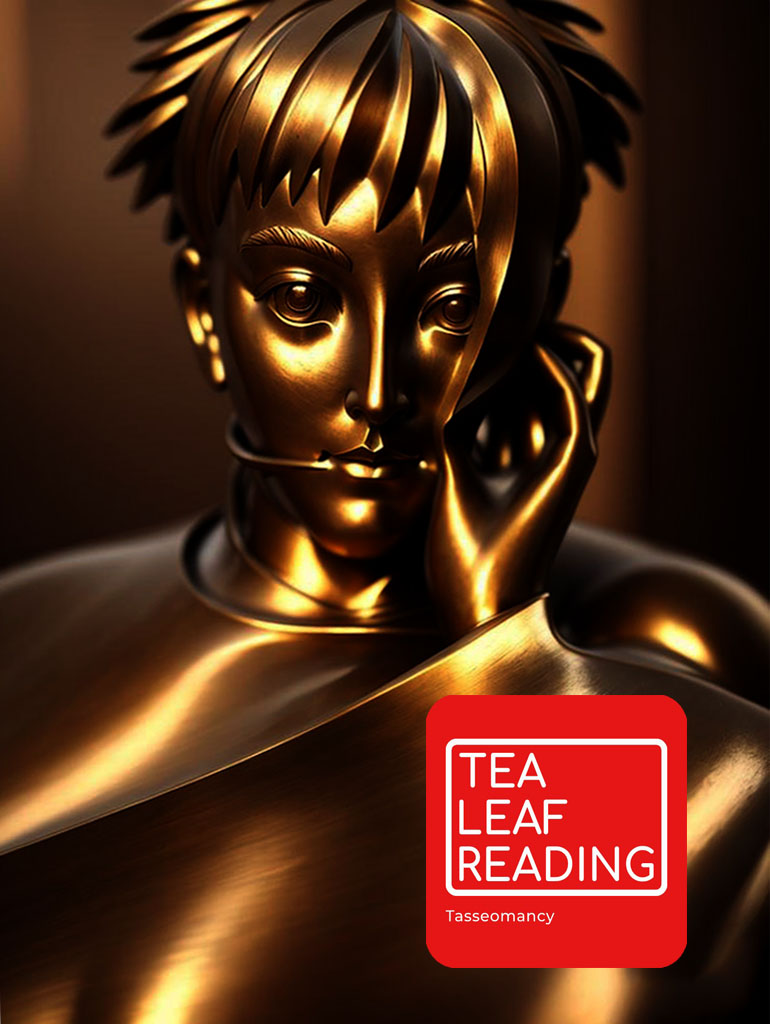Tea Leaf Reading ~ Tasseography-Tasseomancy
https://www.facebook.com/TeaLeaveReadings.Thailand/
The art of reading tea leaves is referred to as Tasseography (or Tasseomancy) and is a divination or fortune-telling method that in western tradition interprets patterns in tea leaves. The term also refers to the reading of coffee grounds, especially in the Middle Eastern tradition. The term has also been applied to the reading of wine sediments. The term derives from the French word tasse (cup), which in turn derives from the Arabic tassa (cup).Tasseography, otherwise known as tasseomancy or tassology, is the art of tea leaf reading. “Tasse” or “tass” is an Arab root, meaning small cup or goblet.
The beverage, Tea, is linked with herbology part of alternative healing. People who seek answers through various forms of divination, such as tea leaf readings, are often healing their issues.
Tea leaf reading is an ancient practice interpreting patterns made by tea leaves in the cup. In addition to the reading of tea leaves, the tradition of tasseography includes the reading of coffee grounds and wine sediments. Although tasseography is commonly associated with Gypsy fortunetellers, the tradition of tea leaf reading arises independently from Asia, the Middle East and Ancient Greece.
Modern tasseography has also been associated with the Scottish, Irish and cultures throughout Eastern Europe.
The significance of the ubiquitous, cross cultural and historical pervasiveness of tea, coffee and sediment reading may be related to the primal human desire for understanding the self. Just as psychological analysis grew prodigiously during the Victorian era, tasseography became popularized as a parlor game. But the practice distinguishes itself from amorphic fortune telling, mystical, occult or other magical activities. Specifically, tasseography is not an application of magic, but rather a tool for tapping into the subconscious by applying meditation to pattern recognition and symbolism.
Tasseography can be a powerful meditative tool providing insights into the reader’s subconscious. The significance of symbolism in psychological study finds theoretical foundation from Plato through Carl Jung.
From a modern sociobiological standpoint, procedures such as drinking from the opposite hand, may coordinate left and right brain activity to stimulate creative problem solving. Common sense indicates that slowing down to focus and organize one’s own thoughts is an effective problem solving methodology.
The process of tasseography stimulates the imagination to create individualized interpretations and solutions. Tea leaf reading is a fun, healthful and creative way to listen to yourself and open your psychic abilities.
In certain western circles that take this form of divination seriously, it is considered ill-advised for one to attempt tasseography using tea from a cut-open tea bag, to substitute loose coffee in place of tea, or to use a symbol dictionary.
Coffee Grind Reading
Cultures of the Middle East that practice divination in this fashion usually use left-over coffee grounds from Turkish coffee turned over onto a plate.
Traditionally, Turkish coffee is used for this, or any coffee that has grinds that sit at the bottom of the cup. The grinds are necessary to form “pictures” to be interpreted. The drinker of the coffee cannot read his or her own cup. The cup must be read by someone else. Most of the liquid in the coffee is drunk, but the sediment at the bottom is left behind.
There are at least two forms of coffee readings. Both require that the cup be covered with the saucer and turned upside-down. However, some traditions such as in Romania require that the sediments in the cup be swirled around the inside of the cup until they cover the majority of the cup’s inside surface. Other traditions such as Armenian and Middle Eastern do not require this swirling but do require that the cup be turned towards yourself for showing your own fortune.
The coffee grinds are given time to settle and dry against the cup before a reading begins. The same is true with tea leaves.
After a reading, in Armenian or Middle Eastern traditions, the drinker will be asked to “open the heart”. This is done by placing the right thumb at the inside bottom of the cup and twisting clockwise slightly. This will leave an impression behind that the fortune teller will interpret as the drinker’s inner thoughts or emotions.
Symbolism in Grinds and Leaves
Many interpretations for symbols exist, but one common thread is the color of the symbols. Since most cups used are white and the grinds are dark, creating good contrast for the symbols. White is considered as a “good” symbol foretelling of generally positive things for the drinker. The grinds are considered as “bad” symbols foretelling of generally negative things for the drinker.
Symbols can be many things including people, animals, and inanimate objects, etc. As a tea leaf reader, the images often come alive for me, as if a hologram, creating a message. Two or more symbols grouped together will may link to the same message, theme. The closer the symbol to the top of the cup, the sooner the event will happen. The thicker the symbol, the stronger the impact on the person’s life.
Most symbols can be read in both a positive or negative context. This is up to the person doing the reading and always subjective. The best way to interpret a symbol is to view it, then use your psychic abilities to make an interpretation.

